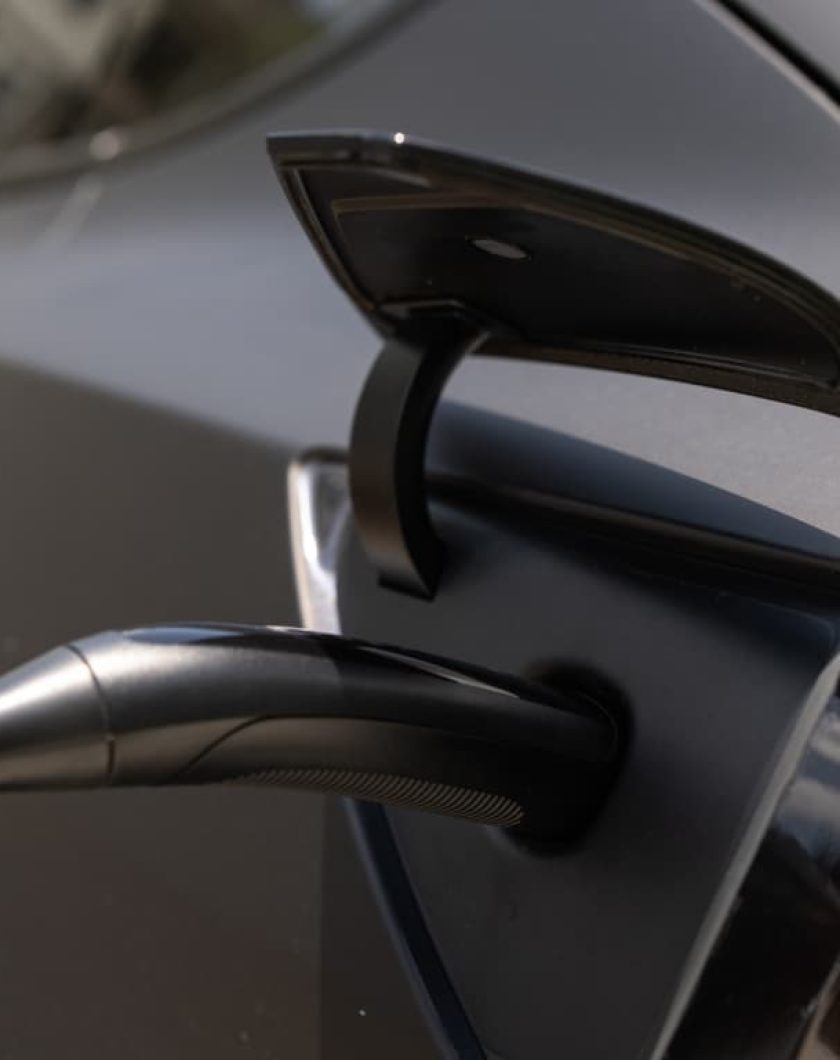
In 2022 we reported that motor claims inflation increased by 6.1% during the first half of 2021 taking the average cost per claim to £5,349.
Last month it was widely reported via insight from WTW that UK comprehensive car insurance premiums increased by 19% in 2022 with policyholders paying out an average of £100 a year more than in 2021(1). The latest figures indicate that insurance costs have increased over the last five quarters. Supply chain disruption, labour and material shortages as well as increasing energy prices have been cited as the main reasons in addition to new rules implemented by the Financial Conduct Authority which bans insurers from charging more to loyal customers. There’s little doubt that claims inflation is going to continue rising as we progress through 2023.
But despite this news can we expect any glimpses of optimism on the horizon? And are there any new challenges insurers need to be planning for? In our latest article we explore the challenges and opportunities for insurers in these uncertain times.
Labour challenges
‘The Great Resignation’ was the buzz word of the post-pandemic era with thousands of workers across every sector leaving their roles in favour of wanting more flexibility. Following that came ‘The Great Retirement’. According to recent statistics the number of ‘economically inactive’ 50 – 64-year-olds is over 300,000 higher than at the start of 2020(2). Interestingly the UK seems to be bucking European trends where there is a higher-level of mature worker participation in the labour market. We’re now hearing about ‘quiet quitting,’ – not a new phenomenon but a natural follow on from the previous trends and further exacerbated by cost-of-living increases and real wage reduction against inflation.
How has this impacted the auto industry? According to the Institute of Motor Industry (IMI) a shortfall of 160,000 workers is predicted in 2031 and they are claiming this is because of an aging population (and fewer younger generations entering the sector), decreased immigration and the green agenda(3). Steve Nash, chief executive of the IMI, said the industry is facing ‘its biggest skills challenge of the last two decades’.
To alleviate this repair shop owners are having to pay more to keep their best people. This is leading to wage inflation with some claiming that labour rates have increased by as much as 21%. One garage owner interviewed by The Guardian(4) said he has given his staff three wage increases in one year increasing the wage bill by £2,000 per employee, a cost that has to be passed on to avoid reductions in profitability. And to top it, labour shortages are causing capacity challenges, even the most straightforward jobs such as a service or an MOT can take longer due to lack of staff let alone the bigger repair jobs.
The IMI also reported:
- The number of jobs in the UK automotive retail sector is forecast to decrease over the next decade, decreasing by 2% to 557,484 in 2031.
- Employment replacement demand (due to retirement, migration and occupational mobility) in UK automotive retail is high, with a requirement of 172,038 jobs. The total net requirement is 159,925.
- 16% of the UK automotive retail demand is from vehicle technicians.
However, this data marks a different story within the UK automotive manufacturing sector where the number of roles is forecast to increase by 4% in the next ten years indicating that the new vehicle market is set to expand.
To add to the labour challenge comes the skills challenge. The electric vehicle (EV) market continues to grow and there is concern across the sector about the need for more qualified EV technicians. The UK government has set strong targets for EV usage and the ban of new petrol and diesel vehicles by 2030 is causing many across the industry to lobby for investment into training the mechanics of the future.
We’re seeing auto employers create new hiring strategies to fill the places. In 2022 Halfords launched a campaign to fill 1,000 technician roles over the next twelve months by targeting more female and retired recruits but they’ve got a challenge on their hands. Campaigns such as this plus increased wage bills means that costs are rising and rising.
The outlook doesn’t look positive for labour challenges. Higher wages, a need for more flexibility, people leaving the industry and not enough of the younger generation coming in is leaving the sector with big questions and decisions on how to address the issue.
Parts shortages, increasing costs and the value of second-hand vehicles
The fact that the phrase ‘supply chain’ became an everyday phrase for the general public speaks volumes. But the impact of the pandemic made that happen with semiconductor shortages featuring daily in most newspapers. From mobile phones to airline manufacture and of course their use in new vehicles the chip shortage has been one of the biggest crises of the pandemic era.
In 2022 we documented that huge strides were being taken to increase capacity, but this wouldn’t happen quickly. It takes time to build new manufacturing sites and with China (one of the biggest manufacturers of semiconductor chips) continuing to operate its zero-Covid policy there wouldn’t be a quick fix. So much so that analysts said it would be end 2023 before the supply / demand equilibrium would be restored.
This prediction appears to be correct as global microchip supply continues to be a problem. Despite efforts from many countries to near shore their chip production quite simply the manufacturing sites are not being built quickly enough albeit we are seeing some improvement on the last two years.
We reported that new vehicle production had either halted, or manufacturers were waiting for the chips to arrive; the current outlook isn’t looking too favourable. Data released in January 2023 reports that annual UK car production fell by 9.8% in 2022(5) as shortages in microchip production continues. But it isn’t just about the chips. The lack of new vehicles meant people were holding onto their cars for longer and this led to a shortage of parts. Procurato were told that 40% of all work in progress had been affected by some form of parts delays with some instances of lead time to replace certain parts taking over twelve months.
Our discussions with industry experts have told us that there are still challenges with the availability for spare parts with some taking longer to get to them but on the plus side the disruption is not as strong as immediately post Covid.
However, The Guardian reports that some motorists are reporting price increases of up to 90% as garages and dealership push up their prices to deal with rising costs3. Within the same report the Office for National Statistics show the cost of running and maintaining personal vehicles has increased by 15% compared with a year ago. This is above the overall inflation rate of 10.1%. An interview in the article from a tyre company manager cites that transport costs remain a huge challenge. Energy costs continue to increase and a key component of tyres, carbon black, is largely manufactured in Russia. In addition, a number of garages are paying back significant amounts on their loan repayments given by the government during Covid.
Without doubt times are still tough but our insight suggests that within the next twelve months we can expect to see some return to pre-pandemic levels – assuming there are no further new disruptions.
Courtesy car availability
As documented previously there was less production of new vehicles and personal owners kept their existing vehicles longer over the last two years which contributed significantly to spare part availability. The knock-on effect was that customers who had to wait for those parts kept hold of their courtesy cars for longer as their cars remained in the garage. Availability for courtesy and lease cars reduced dramatically and insurers were forced to pay higher prices to secure additional vehicles.
Repairers were forced to introduce temporary repairs for roadworthy vehicles. Unfortunately, this was only a short-term fix as those repairs would need addressing in full later.
The situation as we entered 2023 has not improved greatly on courtesy cars. The strain is still being caused by extended repair times, which means customers are in those cars for longer and so reduces the available fleet pool for repairers. In previous times, repairers would have leased additional vehicles to support their contracts but, for those without particularly strong and supportive insurer partner relationships, it’s a financial risk they cannot afford. Whilst the repairers are able to extend the leases on existing vehicles this does not increase the net stock of cars.
Added to this, the global semiconductor crisis continues to cause delays, and a fresh wave of COVID-19 impacts in China’s manufacturing sector are further suppressing the availability of parts and new vehicles and driving up the costs of buying or leasing courtesy cars. As a lead indicator for the situation the SMMT’s recently published figures(6) showing a reduction in new car manufacture in 2022 of 9.8%, the lowest figure in the last decade, including during the lockdown years, indicates the pressure is far from over.

Repair capacity
Last year we reported that capacity in the UK vehicle repair market was an overwhelming 130%. Average lead times for roadworthy vehicles sat at forty days and in some extreme instances vehicles could be in the repair shop for up to twelve months as they waited for parts. Often, repairers were doing quick fixes to get the car back on the road to create short term capacity but as we documented earlier this was only pausing the problem not solving it fully.
The bigger challenge came for unroadworthy (URW) vehicles which got stuck in repairers meaning they couldn’t take on additional work. As a result, URW cases were often being rejected and insurers cut their losses and encouraged write offs with their customers to avoid incurring further costs, say by funding courtesy cars.
To build capacity we saw a higher volume of acquisitions as the seasoned players bought smaller groups or invested in new sites.
The good news as cited from the insurance insiders we spoke to is that driveable repairs are now taking an average of 28 days – still double what pre-storm average was, but heading slowly in the right direction. However, this does depend on geographical location and the type of vehicle. We also understand that most cosmetic repairs can be almost instantly booked in. While there is still a preference for repair over replace, parts inflation and parts availability are the key drivers in that decision.
In a change in behaviour from early 2022, we’re finding that most repair partners are now giving priority to unroadworthy vehicles given the urgency of the need.
What’s on the horizon for 2023?
On the plus side, we’re seeing some improvements, but the challenges of 2022 still remain. But what about new challenges and insights? We’ve been speaking to industry insiders who have shared their thoughts on the top three considerations for 2023.
Total loss process
In the wake of continuing rising prices, the priority for the whole sector is keeping costs down. There are two ways that insurers can maximise income and protect indemnity through the total loss process:
1) Making the correct decision / determination as quickly as possible
2) Settling the customer’s element of total loss as quickly as possible.
Reducing the duration that the vehicle is in the repair shop allows them and the insurer to dispose of the salvage and optimise costs. If either party takes too long to negotiate and settle, they’re risking OpEx inefficiency and will bear the brunt of additional costs.
We can report that the average total loss process is under ten days for those that do a good job. A variety of factors can impact the length including whether the insurer and / or customer is comfortable retaining the salvage, issues with high approaches on the vehicle and cherished plates.
The use of technology to improve efficiency is increasing with tools giving both the customer and the insurer the ability to upload images to enable quicker decision making. We’re seeing more and more insurers developing end-to-end digital solutions for total losses but given many insurers are still on legacy platforms there is still much room for improvement.
At fault 3rd party claims
While there’s not any data to suggest at fault 3rd party claims are increasing, the impact of them is on insurers’ minds. As always, speed is an insurer’s best friend when dealing with such cases and it is more important than ever to have an intervention and capture strategy which mitigates adverse claims journey. Direct insurers should have immediate access to the information upon notification from the customer which improves the chance of success. However, this can be delayed when going through a broker and can incur further costs.
Whilst there is nothing new in these insights, the cost of not doing it effectively is substantial. With average hourly labour rates, according to the ABP Club “State of the Industry” 2022 Report(7), having increased by 13% vs 2021 (to £40.85), the cost to insurers of failing to manage all repairs linked to a claim is significant.
Green part methodologies
When the supply chain disruption was at its most critical repairers would source parts as they could get them, and sourcing green parts fell down the priority order. However, environmental aspects are now on everyone’s agenda. We’re seeing a greater appetite from insurers and repair shops to use them helped in addition by up to 40% price reductions compared to OEMs.
Green parts require the same amount of testing and approvals as non-green so the quality is there however the challenge is coming from needing new expertise from engineers, one that we’ve mentioned above the industry is struggling to find.
The Procurato Way
We have seen this before
Procurato consultants have over 30 years’ experience of managing issues like these and we are currently helping several clients to improve their supply chain. Speak to us to help you establish just how of an issue this is going to be for you and how to fix it.
We understand this market in detail
We have access to unparalleled data and insights from across the whole market meaning we can help you to quickly understand where you benchmark in the sector and provide recommendations to improve.
Our solutions are practical
We can help contractually, operationally, and strategically to guide your thinking through what steps need to be taken and we can help you to execute those plans quickly if you need that support too.
For more information please contact:
Follow us on LinkedIn here
Sign up to our Newsletter here
References
2) https://capx.co/whats-driving-the-great-retirement/
3) 07/Automotive%20Sector%20Employment%202021-31_0.pdf








